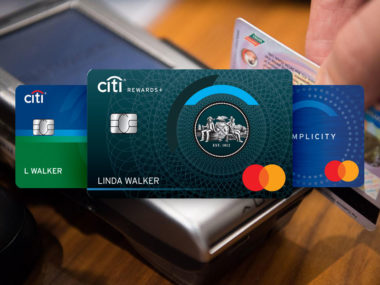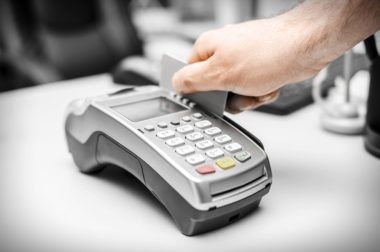Wondering if you can go over on your credit card limit? You can, but it’s not quite the same as overdrafting on your debit card. In this article, we’ll cover the difference between overdrafting on your credit card and debit card, what overdraft protection is, and the risks you take with overdrafting.
Table of Contents
What Is a Credit Card Limit?
A credit card limit is the maximum amount of money your lender has decided to allow you to use. Generally, you never even want to reach this limit. If you find yourself faced with an unexpected bill or you just want to use your credit card to help build your credit score, it might be a good time to get your credit card limit raised.
Your credit card company determines your credit limit based on your past financial history. If you’ve had this card for a while, you’ve paid all your bills on time, and you’ve been responsible with the credit line — you could negotiate a higher credit limit on your card. These are a few good reasons to get your credit limit raised:
- To keep your credit card utilization level low
- To accommodate a new authorized user
- To keep the card instead of cancelling it for a new one
Keeping your utilization levels low and having a long history with the same card are good signs on your credit report, and can even increase your credit score.
What Is Overdrafting?
Overdrafting is when you withdraw more money from your account than you have available. You can overdraft by using your card for a purchase, or by using a check. Bank tellers and ATMs will usually warn you if you are requesting a withdrawal of more than you currently have available.
Some banks offer overdraft protection, specifically for debit cards. This opt-in service allows your bank to pull money from a linked account, like a savings account, in order to protect you from overdrafting on your main account. Overdrafting on your account usually results in a fee you have to pay or a higher interest rate on your purchase.
Can You Overdraft a Credit Card?
Since credit cards are linked to a line of credit, rather than a bank account, overdrafting in the traditional sense is not quite what happens. Instead, you might make a purchase that exceeds your credit limit. Most banks will allow you to exceed the credit limit on your credit card, but it comes at a price. Any card issuer must disclose what fees you’ll incur if you exceed your credit limit and you should be able to find this information on your credit card agreement. But going over your credit limit — even just hitting your limit — can also impact your credit score. We’ll cover over limit fees and risks next.
Over Limit Fees
Overdrafting on your credit card will usually result in overdraft fees for every purchase made over your limit. Depending on your credit card agreement, you could also be faced with an increased interest rate once you go over your credit limit. Again, check your agreement or call the number on the back of your card to find out the exact amount you’ll be charged for the overdraft.
Risks of Going Over Your Credit Limit
Not only will overdrafting on your credit card cost you a fee along with increased interest, it can also have a negative impact on your credit score. When you use your credit card responsibly and keep your utilization ratio low, you can actually build up your credit score. But once your credit card balance becomes too high, it can have the opposite effect.
What is a utilization ratio and where should your credit card balance be? Your utilization ratio is how much credit you’ve used, compared to how much credit you’ve been given. So if your credit card has a limit of $1,000, you’ll want to keep your credit card balance below 30 percent, or $300.
Charging over 30 percent of your limit won’t cause an overdraft, but it doesn’t look good on your credit report and could bring your credit score down a few points. Likewise, exceeding your credit limit will have an even greater negative effect on your credit.
Can You Overdraft a Debit Card?
Yes, you can overdraft on your debit card. Most banks will give you the option to either opt in or opt out of overdraft protection services. If you opt out of overdraft protection and you overdraft on your debit card, the transaction will be declined and you won’t be charged a fee. However, many people find a declined card far too embarrassing to take the risk.
Overdraft Fees
With overdraft protection, you allow your bank to pull money from a linked account (like your savings) to cover any overdraft purchases made. Overdraft protection could save you from the embarrassment of a declined card but it will cost a fee of anywhere from $9 to over $35 per transaction. Check with your bank to find out exactly how much you could be charged for an overdraft.
Overdrafting on your credit card or debit card is allowed, but it’s risky. It might seem worth it if you’re dealing with a financial crisis, but the extra fees and increased interest can easily put you in a worse position than you started out with. Try to avoid overdrafting if at all possible.
Image Source: https://depositphotos.com/





